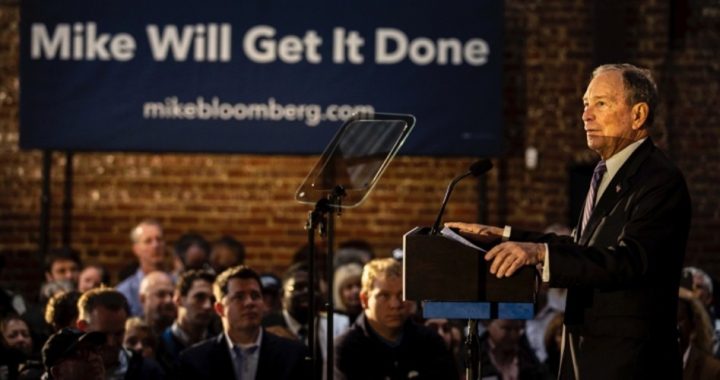
Former New York City Mayor Michael Bloomberg on Tuesday unveiled his plan to make higher education more affordable, including making community college free for all and the terms of federal student loans more lenient.
The media magnate’s plan doesn’t go as far as those of some of his rivals for the Democratic Party’s presidential nomination, but it still represents a significant increase in federal spending on and involvement in higher education.
The primary selling point of Bloomberg’s plan is his desire to “make two-year public college tuition-free for all” and to cover all other costs, such as food, books, and transportation, for the lowest-income students, defined by the campaign as those from families who, on average, earn less than $30,000 annually. Similarly, Bloomberg wants to make four-year colleges “affordable for the middle class” and completely free for the lowest-income students.
Bloomberg plans to accomplish these goals by doubling the maximum Pell grant and extending grants to “incarcerated students and Dreamers,” launching a two-to-one federal-state funding partnership for higher education, and reforming the federal student-loan system. Specifically, he wants to slash the repayment-rate cap from 10 percent of discretionary income to five percent, forgive up to $57,000 in undergraduate loans after 20 years “if borrowers are making reasonable progress on their loans,” and scratch loans made to borrowers who attended “failed or predatory for-profit colleges.”
Of course, with all this additional federal funding comes federal control. Bloomberg wants Washington to micromanage colleges’ and universities’ internal policies to ensure that the “right” people are accepted and shepherded through to graduation.
Bloomberg complains that “80 percent of highly-selective private colleges and universities” give preferences to the children of alumni in admissions and that “only 7 percent of students at highly competitive colleges and universities are low-income.” He would “support legislation to require all institutions receiving federal aid to make public their comparative rates of admission for legacy and non-legacy candidates, as well as enrollment and completion rates broken out by race, income and legacy status.” If this fails to shame them into doing as he desires, he says he would “consider stronger measures.”
In addition, Bloomberg wants to “triple direct federal Title III funding” to institutions serving blacks, Hispanics, and other minorities. And because, it seems, a physician’s melanin level plays a significant role in his ability to treat patients, Bloomberg also seeks to hike funding to historically black colleges “to increase the number of physicians of color.”
States and institutions participating in Bloomberg’s proposed funding partnership would also be required to bow to Uncle Sam. They would have to “commit to limit tuition hikes, reverse disinvestments and meet maintenance of effort requirements and keep the full cost of attendance from rising faster than inflation.”
Bloomberg proposes federal spending to “strengthen career-training programs” and to help adults who have completed college but did not graduate to re-enroll and obtain degrees. And since government always rewards failure with more money, Bloomberg wants to “identify low-quality programs with extremely poor student earnings” and then give them “funding … for improvement plans and external support.”
According to Politico, Bloomberg projects that his plan would cost $700 billion over the next decade — money that he believes he can raise by taxing the rich.
Besides being unconstitutional — just as all other federal education initiatives are — Bloomberg’s plan not only would fail to solve the problems he sets out to solve but would exacerbate them. Bloomberg gripes that student debt is at record levels and that “two-thirds of U.S. jobs today require some form of post-secondary education,” yet it is government meddling in higher education that has caused these problems. Student loans and grants have driven up the cost of education by increasing demand for college while decreasing institutions’ cost-consciousness. An ever-larger pool of college graduates has greatly decreased the value of undergraduate degrees. (Bloomberg’s proposal to help 70 percent of Americans get a graduate degree would only devalue those degrees, too.) Government interference in college admissions has enabled many mediocre students to matriculate at selective institutions where they are doomed to failure.
Bloomberg’s plan suggests he doesn’t really want to solve the problems plaguing higher education. What he actually wants are the votes of the uninformed and shortsighted.
Photo: AP Images



